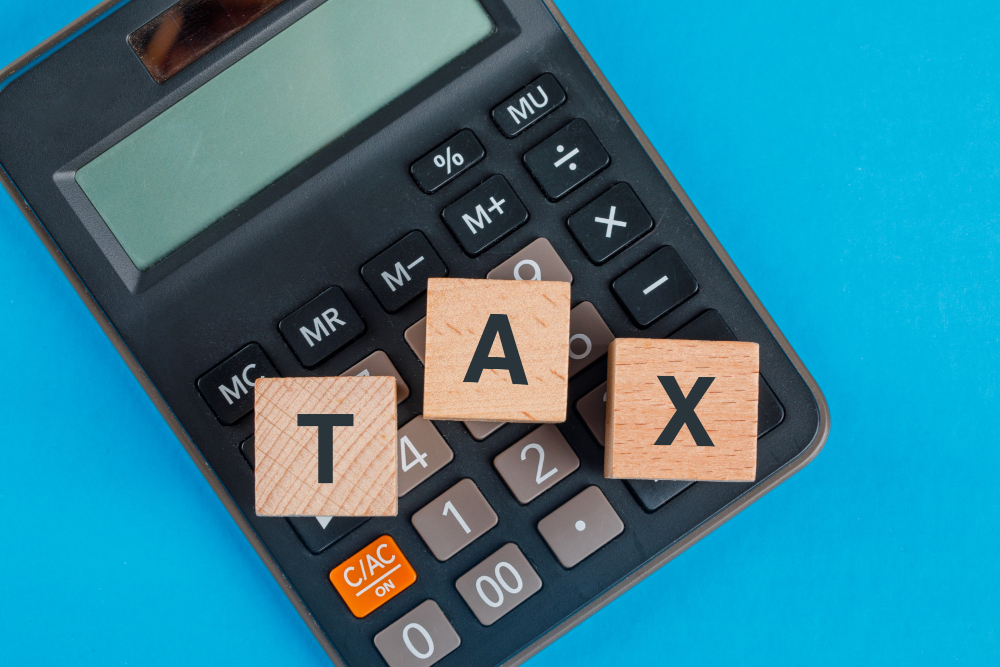 Affiliate Blog Copy – Sell Without Selling. Earn More Now!
Affiliate Blog Copy – Sell Without Selling. Earn More Now!
How Can You Maximize Input Tax Credit Under GST
Written by AMpuesto » Updated on: June 22nd, 2025

- Understanding Input Tax Credit under GST
Input Tax Credit (ITC) is a fundamental feature of the Goods and Services Tax (GST) system in India. It allows businesses to claim credit for the GST paid on purchases used to make taxable supplies.
The input tax credit under GST reduces tax liability by offsetting the tax paid on inputs. Here's what you need to know:
- Definition: Input tax credit refers to the credit a business can claim for the GST paid on purchases.
- Purpose: It prevents cascading taxes by allowing tax credit for taxes paid on business inputs.
- Claim Process: To avail input tax credit, invoices must be properly documented and matched in GST returns.
- Types of Eligible Inputs: These include raw materials, capital goods, and input services.
- GST Returns Required: Filing GSTR-1 and GSTR-3B accurately is necessary to claim ITC.
- Compliance is Key: Timely filing and invoice matching with supplier data is essential to avoid denial of ITC.
The input tax credit under GST streamlines taxation and helps businesses maintain liquidity.
Eligibility Criteria for Claiming Input Tax Credit
Eligibility for ITC under GST is governed by Section 16 of the CGST Act, 2017. Only registered taxpayers can avail this benefit under certain conditions.
Let’s see who can claim input tax credit under GST:
- Registered Taxpayer: Only those registered under GST can claim ITC.
- Business Use Only: Inputs should be used solely for business purposes.
- Valid Invoice: A tax invoice or debit note must be available.
- Invoice Matching: Invoice should be uploaded by the supplier and shown in GSTR-2B.
- Goods Received: The goods or services must be actually received.
- Timely Payment: Payment should be made within 180 days of invoice.
- Filing Returns: Monthly returns (GSTR-3B) must be filed to reflect credit.
Understanding these conditions helps optimize input tax credit under GST.
Importance of Timely GST Return Filing
Timely GST return filing is critical for uninterrupted input tax credit. Delays can lead to denial or deferral of credit.
How timely filing boosts ITC:
- Avoid Blocking of ITC: Credit gets blocked if returns aren't timely.
- Better Cash Flow: Timely ITC claims free up capital.
- Avoid Penalties: Late filings attract penalties.
- Compliance Rating: Enhances credibility with suppliers.
- Invoice Matching: Filing ensures invoices are in GSTR-2B.
- Fewer Reconciliation Issues: Minimizes mismatches.
Proper reminders help businesses file returns on time and maximize input tax credit benefits.
Matching Invoices with GSTR-2B
GSTR-2B is a static auto-drafted statement that helps in matching purchase data for ITC claims.
Using GSTR-2B to your advantage:
- Invoice Reconciliation: Match every invoice with GSTR-2B.
- Avoid Mismatches: Ensure supplier files correct invoices.
- Spot Ineligible ITC: Identify blocked credits under Section 17(5).
- Track Missing Invoices: Follow up with suppliers.
- Audit Support: Offers a snapshot of credit.
- Faster Claim: Accurate matching speeds up ITC.
Use of GSTR-2B ensures accurate claims of input tax credit under GST.
Maintaining Proper Documentation
Documentation is the foundation of claiming input tax credit under GST. It supports claims during audits or notices.
Important records to maintain:
- Tax Invoices: Include GSTIN, tax amounts, and HSN codes.
- Payment Vouchers: Needed for reverse charge.
- Bill of Supply: For exempt supplies.
- Books of Accounts: Show inputs linked to sales.
- Vendor Agreements: Establish legitimacy.
- Reconciliation Records: GSTR-2B vs. purchase ledger.
Proper documentation supports timely input tax credit under GST claims.
Blocked Input Tax Credit Scenarios
Not all ITC is allowed. Section 17(5) outlines scenarios where ITC is blocked.
Examples of blocked credits:
- Motor Vehicles: Unless for transport of goods or passengers.
- Personal Use Goods: Not eligible.
- Construction Services: For own use are ineligible.
- Club Membership & Travel: Not eligible.
- Gifts and Samples: Can't claim ITC.
- Restaurant Services: Ineligible unless used for the same output.
Avoid ineligible claims to maintain a clean input tax credit under GST record.
Reversals of Input Tax Credit
Some situations require reversal of claimed ITC. These are adjustments when ITC conditions aren’t met.
When reversals are needed:
- Non-payment: Reverse ITC with interest if not paid in 180 days.
- Exempt Supplies: Reverse proportionately.
- Personal Use: Reverse ITC for non-business use.
- Credit Notes: Reflect reduction in liability.
- Cancelled GSTIN: Reverse pending ITC.
- Capital Goods Sold Early: Partial ITC reversal.
Track reversals for accurate input tax credit under GST.
Utilizing Technology to Track Input Tax Credit
Technology simplifies ITC tracking and minimizes errors. Automation helps avoid manual mistakes.
Benefits of using technology:
- Invoice Matching: Real-time reconciliation.
- Reminders: Timely return filing.
- Vendor Compliance Checks: Flags defaulters.
- Ledger Management: Track claimed vs. available ITC.
- Rule-based Alerts: Flags blocked credits.
- Audit Trails: Maintain digital records.
Smart tools help maximize input tax credit under GST.
Best Practices to Maximize Input Tax Credit
Following best practices ensures effective ITC claims. A proactive approach enhances compliance.
Strategies to follow:
- Choose Compliant Vendors: Ensure return filing.
- Monthly Reconciliation: Match books with 2B.
- Train Staff: Update on rules.
- Internal Audits: Spot errors.
- Timely Corrections: Amend mismatches.
- Keep Backups: Digital and physical records.
These habits boost input tax credit under GST.
Common Mistakes to Avoid While Claiming ITC
Mistakes can lead to denied credits. Awareness helps prevent errors.
Avoid these mistakes:
- Wrong GSTIN: Makes invoice invalid.
- Late Filing: Missed deadline leads to loss.
- Claiming Blocked Credit: Know Section 17(5).
- Unreported Invoices: Not in 2B means no claim.
- Mismatched Records: Reconcile carefully.
- Ignored Reversals: Leads to audit issues.
Avoid mistakes to safely claim input tax credit under GST.
Conclusion
Maximizing input tax credit under GST isn’t just about claiming credit—it’s about doing it right. By understanding eligibility, maintaining accurate documentation, filing returns on time, and adopting technology, businesses can significantly reduce tax liability and improve cash flow.
In a compliance-driven ecosystem, mastering the rules of input tax credit is not optional—it’s essential. Avoid blocked credits, perform timely reconciliations, and follow best practices to make the most of your input tax credit. With diligence and smart planning, you can unlock the full potential of this powerful tax-saving tool.
Note: IndiBlogHub features both user-submitted and editorial content. We do not verify third-party contributions. Read our Disclaimer and Privacy Policyfor details.
Copyright © 2019-2025 IndiBlogHub.com. All rights reserved. Hosted on DigitalOcean for fast, reliable performance.









